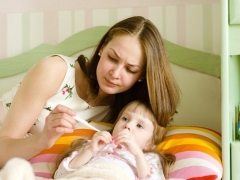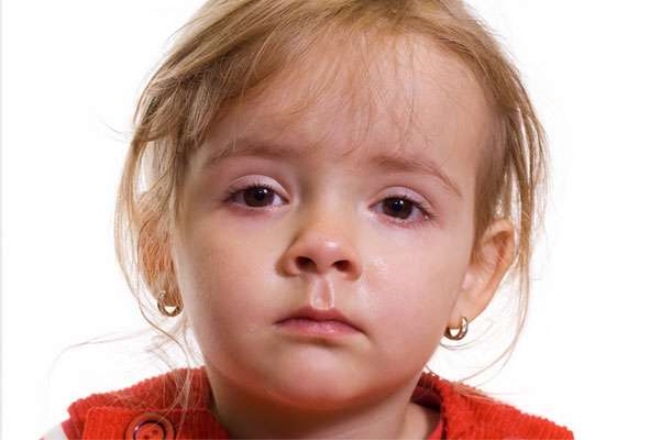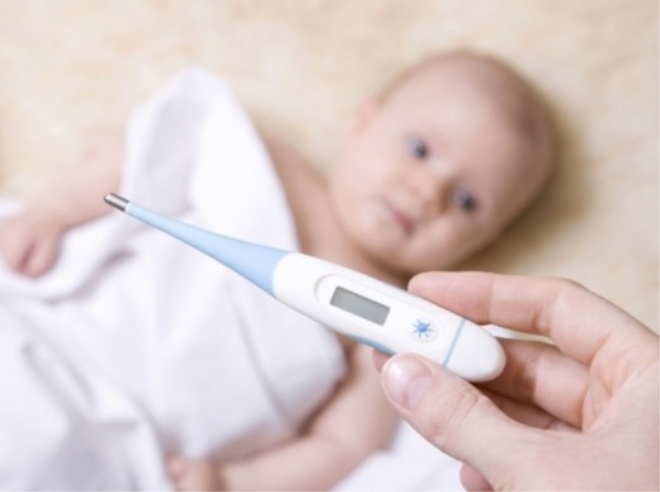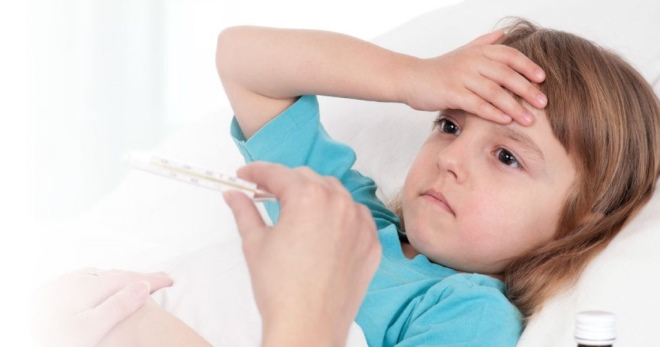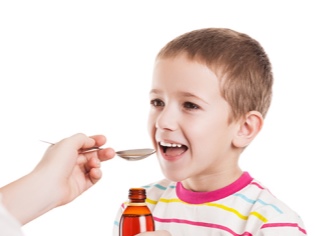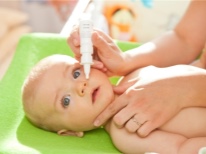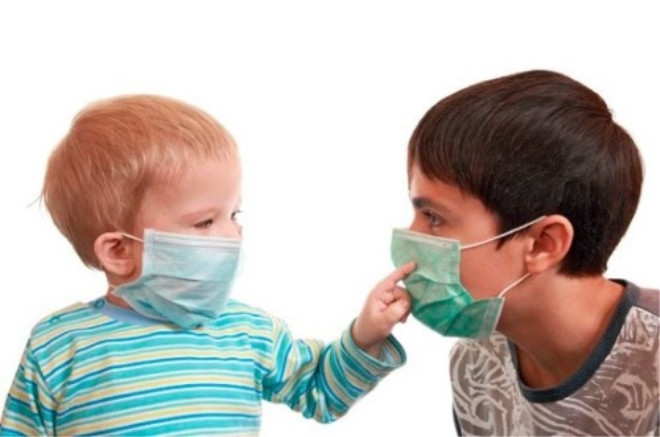Adenovirus infection in children
There are many respiratory diseases that cause fever and a bad cold. Quite often, these symptoms are caused by adenovirus infection.
What it is?
Acute respiratory disease, accompanied by the appearance of a copious runny nose and occurring with symptoms of fever, is called adenovirus infection. The source of the disease are adenoviruses.
Currently, there are about 50 different subspecies. They are very small in size, which contributes to their easy penetration from a sick child to a healthy one. In the environment, adenoviruses are stored perfectly. Even sub-zero air temperature does not have a destructive effect on them. Only when boiling do they die in a few seconds.
How can you get sick?
There is no innate immunity to adenovirus infection. This causes the light susceptibility of infants to infection. Infants of the first 5-7 months of life fall ill less often. This is due to the fact that they have passive immunity received from the mother as a result of breastfeeding.
Baby older than one year can easily become infected. Adenoviruses enter the children's body through the upper respiratory tract, and, in some cases, through food. The source of infection is any adult or child who is already sick with this infection.
After the disease, immunity is usually not formed. This leads to frequent and repeated cases of the disease in the future.
Outbreaks of adenovirus infection are recorded, usually in the cold season. Boys and girls can get infected equally often. Mostly infected children 3-7 years. At older ages, there are far fewer cases of adenovirus infection. Some scientists explain this by the fact that after repeated infections with the same infection in children, post-infectious immunity is formed.
Once in the body during respiration, adenoviruses quickly settle on epithelial cells. After a few hours, their number increases many times. In some cases, the primary lesion is the intestine. There viruses get with food. With blood flow, they rapidly spread throughout the body, falling into almost all internal organs.
A day later, the viruses reach the lymph nodes. They can settle there and exert their negative toxic effect. This somewhat weakens the immune system. Usually viruses die 18-22 hours after active reproduction. However, if untreated, new viral generations are formed that support inflammation.
The affected epithelium of the upper respiratory tract, conjunctiva, nasal and oropharyngeal mucosa begin to function poorly. A strong inflammatory process leads to the development of adverse symptoms. They bring to the child pronounced discomfort, and also significantly impair his overall well-being.
A high concentration of viruses in the blood leads to their rapid penetration into various organs. When treatment fails and the disease progresses, a sick child often has various complications. In this case, affects the lungs, bronchi, and in some situations, even the kidneys and liver.
Incubation period
From the moment the virus enters the body until the first adverse symptoms appear, it usually lasts 1-2 days.However, in some cases, such a period can stretch to even a week. This is due to the initially different levels of immunity in children. In infants, the incubation period can even be 2 weeks.
Usually at this time the child does not bother, he leads a normal life. Only in some babies can you notice some change in behavior. They become more sluggish, play less toys, often there is a bad mood or loss of appetite.
Symptoms
The incubation period ends with the first signs of adenovirus infection. They can manifest themselves in different ways. Usually within 1-2 days the severity of symptoms increases markedly.
Everything about adenovirus infection will tell us the infectious diseases doctor in the next video.
Clinical manifestations of adenovirus infection include:
Temperature rise. It usually rises to 37-38 degrees. Only in severely weakened babies or in severe cases of the disease its increase to 39 is observed. In some cases, the disease can be without fever. In this case, additional diagnostics are required.
Severe runny nose. It is caused by inflammation of the mucous membrane, which leads to swelling of the nose. Discharge abundant, mucous. Most often they are transparent or with a yellowish tinge. When a secondary bacterial infection is attached to a baby, the discharge becomes green or bright yellow.
Redness in the throat. The mucous membrane of the oropharynx is quickly involved in the inflammatory process. This leads to its loosening and severe redness. This wound surface becomes a favorable environment for the development and growth of pathogens.
Headache and severe general weakness. Are manifestations of intoxication. Viral toxins have a negative effect on all organs. This leads to intoxication. Usually the headache is aggravated by a very high body temperature.
Muscle aches. Occur almost throughout the body. The severity of the pain depends on the severity of the disease.
Abdominal discomfort with the development of nausea and vomiting. These symptoms occur predominantly during the initial ingestion of viruses with food. Vomiting is most often single, in small quantities.
Deterioration of well-being. Toddlers become very lethargic, may cry or whimper. They have a markedly reduced or no appetite. Children become more sleepy, do not want to play, try to spend more time in the crib.
Conjunctivitis. It is manifested by a strong tearing and redness of the eyes. Usually detachable turbid with a slight yellow tinge. With adenovirus infection, both eyes are affected. When attaching a secondary bacterial infection, discharge from the eyes becomes purulent.
Enlarged cervical lymph nodes. With their palpation, it is possible to identify dense, enlarged and tightly welded to the skin rounded education. Such an examination and palpation does not cause pain in the baby. In severe cases or in very weakened babies, the inflamed lymph nodes become visible even from the side.
Kinds
All variants of adenoviral infections can be divided into several categories. In general, doctors use classifications in which the allocation of infections by clinical forms, as well as by severity, is meant.
Depending on the nature of the manifestations of adenovirus infection can occur in the form of:
Tonsillopharyngitis. In this case, the throat and oropharynx are predominantly affected. The surface of the tonsils becomes bumpy and loosened. Toddlers complain of pain when swallowing. In infants strongly reduced appetite. They may even refuse breastfeeding. Tonsils - enlarged and painful.
Pharyngoconjunctival fever. For this form of the disease is characterized by predominant damage to the eyes and throat.The inflammatory process leads to severe tearing and redness. It is difficult for kids to swallow food. Hot or cold food can cause increased pain.
Mesenteric lymphadenitis. In babies, the stomach becomes very swollen and even somewhat tense, it hurts. In some cases, vomiting and severe nausea occur. Often, doctors even have to exclude surgical pathology, since diseases have similar symptoms.
Qatar upper respiratory tract. The most common variant of the disease. It is characterized by the appearance of a bad cold and a violation of nasal breathing. When treatment is untimely started, a barking cough joins. This indicates the involvement in the inflammatory process of the bronchi with the development of tracheobronchitis.
Keratoconjunctivitis. This variant of the disease is most rare. In addition to inflammation of the conjunctiva and the cornea, the baby no longer has any other damage. Symptoms may appear bright or be mild. To establish the diagnosis, doctors resort to the appointment of additional examinations.
According to severity, adenoviral infection can be:
easy Characterized by slightly pronounced symptoms. The temperature reaches 37-37.5 degrees. Symptoms of intoxication are mild. Adverse manifestations of the disease pass quickly. A week later, the child recovers completely;
moderately heavy. Accompanied by more pronounced symptoms of intoxication. The baby has a fever or chills. Body temperature rises to 38 degrees. The course of the disease is more protracted. Complications may develop;
heavy. The condition of the child suffers greatly. The disease threatens with complications and can lead to adverse consequences. Often there are symptoms of bronchitis, spleen and liver are enlarged. The treatment is carried out in a hospital.
How does the disease in newborns and infants?
Children of the first months of life are relatively rarely sick with adenoviral infection. This is due to the presence of protective antibodies derived from the mother during breastfeeding. Such protection is able to protect the child only for the period of attachment to the chest. After the cancellation of such feeding in a few months passive immunity disappears.
Infant baby can get sick as easily as any other. Usually the smallest particles of viruses enter the children's body along with the air. Infants may have a longer course of the disease. The incubation period is usually 5-7 days.
After it ends, the child has a mild runny nose, fever, and a slight cough begins. The general condition of the kids changes. They are poorly applied to the chest due to reduced appetite. Some kids sleep more, they can be more naughty and ask for their hands more often.
Diagnostics
Usually, for the establishment of a diagnosis, it is enough to have a certain set of clinical symptoms. During the outbreak of the disease to determine the disease is quite simple. However, in some cases, auxiliary diagnostic methods are required, since the disease has similar manifestations with influenza or other acute respiratory infections.
A baseline test that allows you to suspect a viral cause of the disease is a complete blood count. In adenovirus infection, a moderate increase in the total number of leukocytes is observed, ESR is accelerated, and changes in the leukocyte formula are also seen. The total number of lymphocytes may increase.
For accurate detection of the pathogen can be carried out microscopic examination of discharge from the nose or oropharynx. In some cases, bacposev is performed to determine the sensitivity to phages. Such a study helps physicians make an accurate differential diagnosis of the disease and also prescribe the right treatment.
Complications and consequences
Most cases of adenovirus infection is quite easy. After 7-10 days from the moment of the first appearance of symptoms, the disease completely disappears. For a while, the baby may be disturbed only by a slight residual rhinitis. But this symptom disappears completely after 2 weeks.
If the child has associated chronic diseases, then the course of the disease may not always be easy. In such cases unfavorable complications usually develop. Quite often, when secondary bacterial flora is attached, inflammation passes to the lungs and bronchi. In this case, bronchitis or even pneumonia can develop.
To draw up the correct treatment tactics, doctors use clinical guidelines. These medical benefits contain all the necessary algorithm of actions in identifying the first signs of adenoviral infection in a child.
Treat adenovirus infection immediately after the first clinical symptoms appear. During the prescribed therapy will help the baby recover quickly.
Treatment of complications is carried out only in the hospital. Severe pneumonia is accompanied by the appearance of symptoms of respiratory failure. Very weak children may even have sepsis as a result of severe inflammation. However, this is extremely rare.
In infants, adenovirus infection often causes complications such as inflammation of the middle ear. Viral otitis media is accompanied by hearing loss and impaired sound perception. Medicinal drops are used to treat this condition. This complication usually passes in 10-14 days.
Treatment
Treat adenovirus infection immediately after the first clinical symptoms appear. During the prescribed therapy will help the baby recover quickly.
The following agents and methods are used to treat the disease:
Proper nutrition. Helps ensure good functioning of the immune system. The child should eat at least 5-6 times a day. Protein foods should be included in the baby’s diet during illness. Meat, poultry, fish and fresh dairy products will be excellent sources of protein. These products need a child's body to strengthen the immune system and a quick recovery.
Plentiful warm drink. To remove viral toxins from the body, the baby must receive at least a liter of fluid per day. Infants should be additionally boiled with boiled water, cooled to room temperature. Older kids are well suited fruit and fruit and berry juices, fruit drinks, as well as homemade fruit drinks.
Daily regime. In order for the baby to have the strength to cope with the infection, he must always sleep regularly and with high quality. The duration of a night's sleep during illness is 8-9 hours. In the afternoon also the baby should rest. Typically, a day rest is 2.5-3 hours.
Medications. They help to eliminate cough, normalize the temperature, as well as cope with uncomfortable catarrhal symptoms. Special nasal drops are used to eliminate the cold. When attaching a secondary bacterial flora, antibiotics are required.
Vitamin therapy. During an exacerbation of the disease, multivitamin complexes with a high content of ascorbic acid or vitamin C are assigned to babies. This substance helps to cope with viruses and activates the cells of the immune system.
Airing the premises. Given the ability of viruses to be well preserved in the external environment, the children's room should be aired regularly. This will help to significantly reduce the concentration of pathogenic microbes in the air. Airing should be carried out at least 3-4 times a day, usually 15-20 minutes.
Disinfection of toys and all items with which the child is often in contact. When the first signs of infection appear, all children's things should be washed under hot water with a special antibacterial detergent.Such treatment will help prevent further spread of the infection.
What drugs are used to treat?
Doctors prescribe various medications that help eliminate all adverse symptoms. Usually the treatment is 5-7 days. In more severe cases, it can be extended to two weeks. If during adenovirus infection a secondary bacterial flora is attached, then therapy may be delayed for a month.
For drug therapy of adenovirus infection is used:
Vasoconstrictor nasal drops. These tools help to stop the runny nose and eliminate heavy discharge. Before dropping the drops, wash the baby’s spout with salt solutions (“Aquamaris”, “Aqualore», «Dolphin"). Usually drops are prescribed for 3-5 days. Longer their use contributes to the development of complications and even prolonged rhinitis.
Antipyretic. Apply only when the temperature rises above 38 degrees. To eliminate subfebrile, antipyretic agents should not be used. Babies prescribe drugs based on paracetamol. To remove the heat, you can wipe the body of the child with gauze cloths soaked in boiled water.
Eye drops. They are used to eliminate tearing and redness of the eyes. Before digging in the drops, the child’s eyes must be wiped with cotton pads dipped in loose tea or boiled water. Treat sore eyes should be 3-4 times a day.
Immunostimulating agents. Appointed with moderately severe disease and weakened babies. Can also be used in children with immunodeficiencies. Often appointed in the form of suppositories, nasal drops or aerosols. Discharged for 5-7 days.
Restorative means. These include multivitamin complexes and adaptogens (Eleutherococcus, Schizandra). They are applied in the second half of the disease after the acute process subsides. Help the child recover faster and strengthen the immune system.
Antitussives. Appointed with the appearance of cough. For better sputum discharge, you can use expectorant drugs, as well as herbal chest fees. Perfectly suitable broths made from coltsfoot, sage, chamomile and calendula. They are used with caution, as they can cause allergic reactions.
When attaching the bacterial flora, antibiotics are prescribed. The course of the disease usually becomes more severe. Perfectly fit antibacterial agents with a wide spectrum of action (Amoxiclav, Flemoxin solyutab, cephalosporin preparations and others). Preparations are prescribed by the attending physician, taking into account the age of the child and the chronic diseases of the child.
Prevention
Preventing adenovirus infection is much easier than treating the adverse symptoms of the disease. Preventive measures help prevent mass outbreaks of the disease and significantly reduce the incidence in babies.
In order to reduce reduce the development of infection, use the following tips:
Do not take your child to kindergarten during outbreaks of respiratory diseases. Keeping quarantine helps prevent massive cases of illness. Typically, quarantine activities in pre-school educational institutions last 10-14 days.
It is necessary to strengthen the immune system. This will perfectly help walking in the fresh air and active games on the street. Also shown good nutrition and adherence to the day.
Do not allow exacerbations of comorbidities. Often, children with long-term otitis or sinusitis are more susceptible to adenovirus infection. Regularly undergo examination with the child at the otolaryngologist to avoid exacerbations.
During epidemic outbreaks, use special protective masks. They will help protect the organs of the upper respiratory tract from the penetration of viruses. Change the gauze mask should be every 2-3 hours.
Adenovirus infection completely passes in 7-10 days. After a quality treatment, the babies quickly recover. Preventing reinfection in the future will only help compliance with preventive measures.
